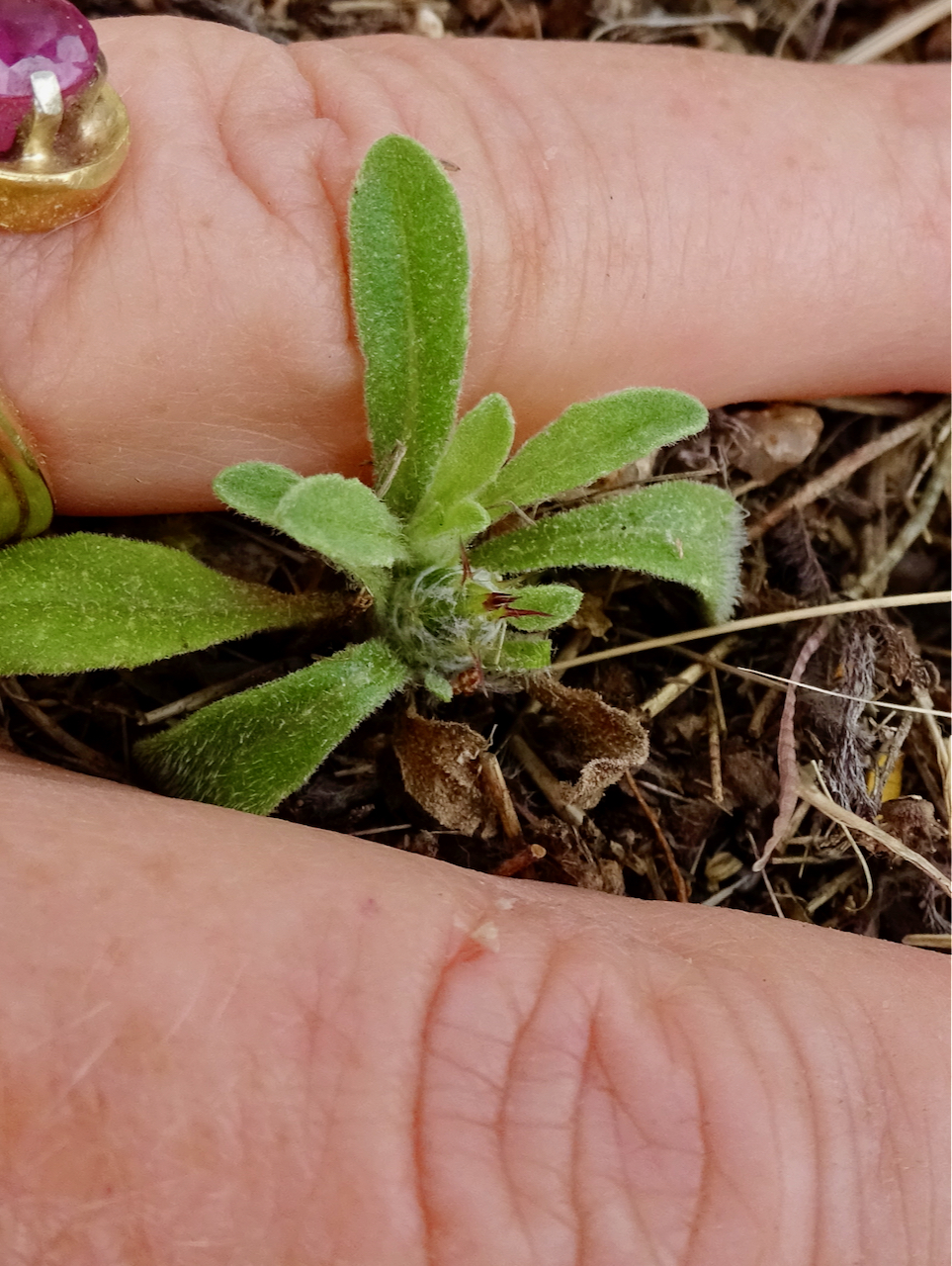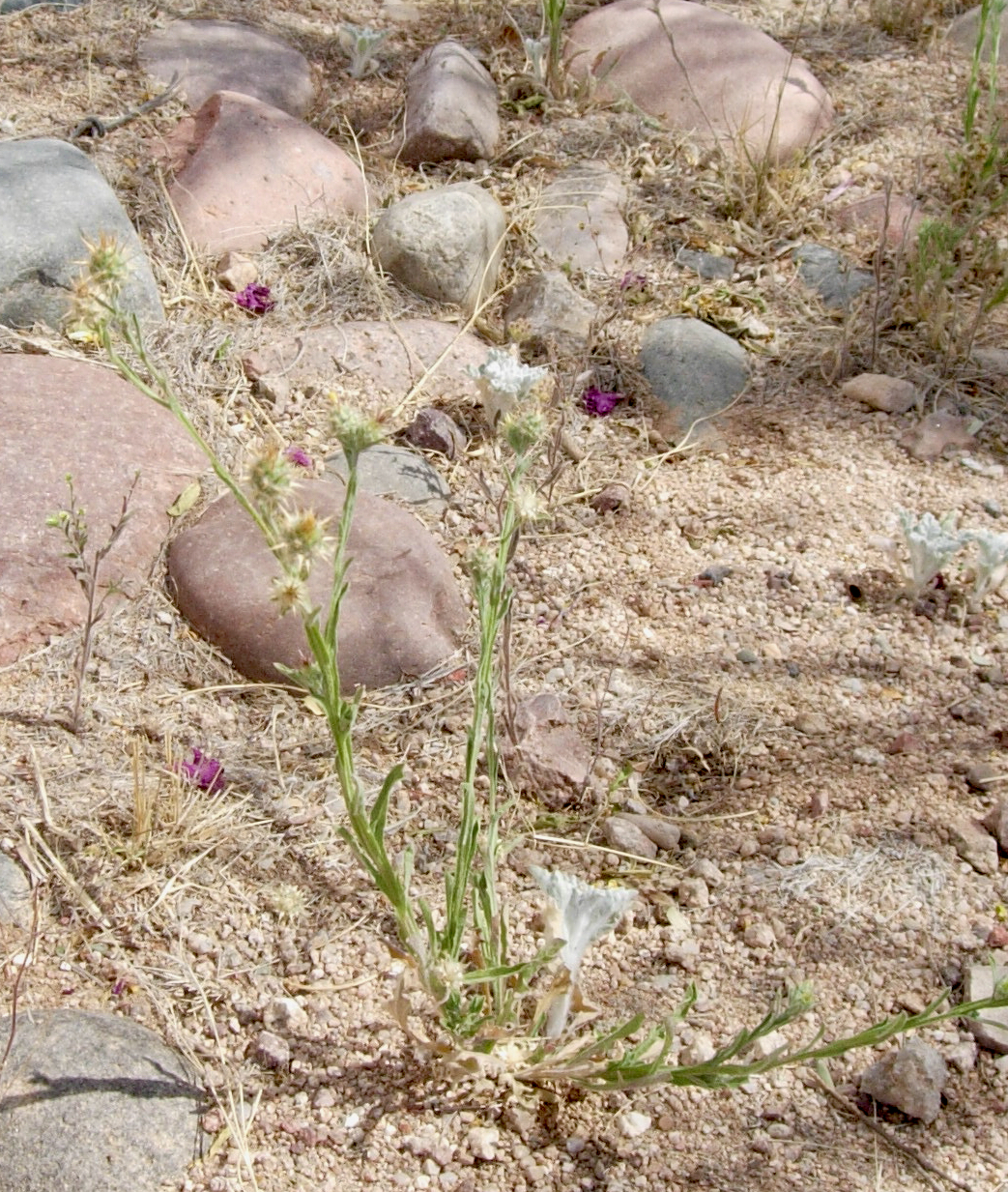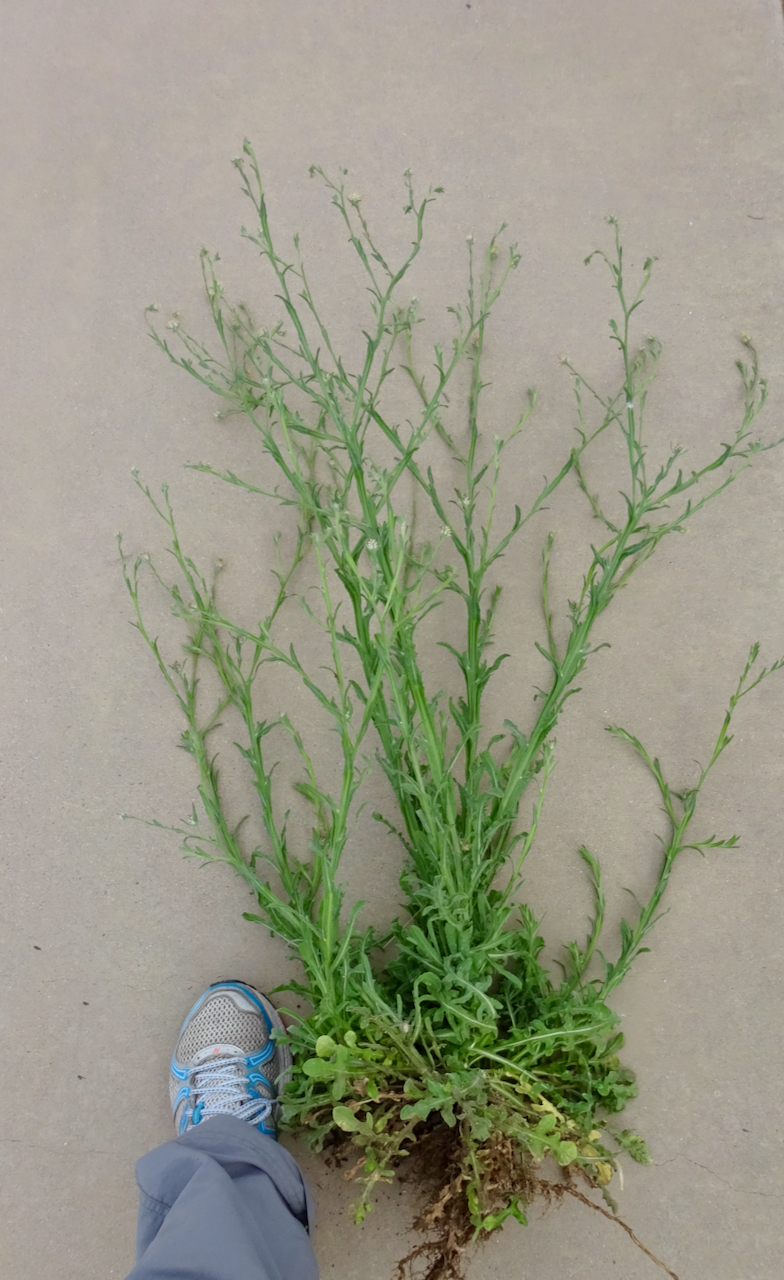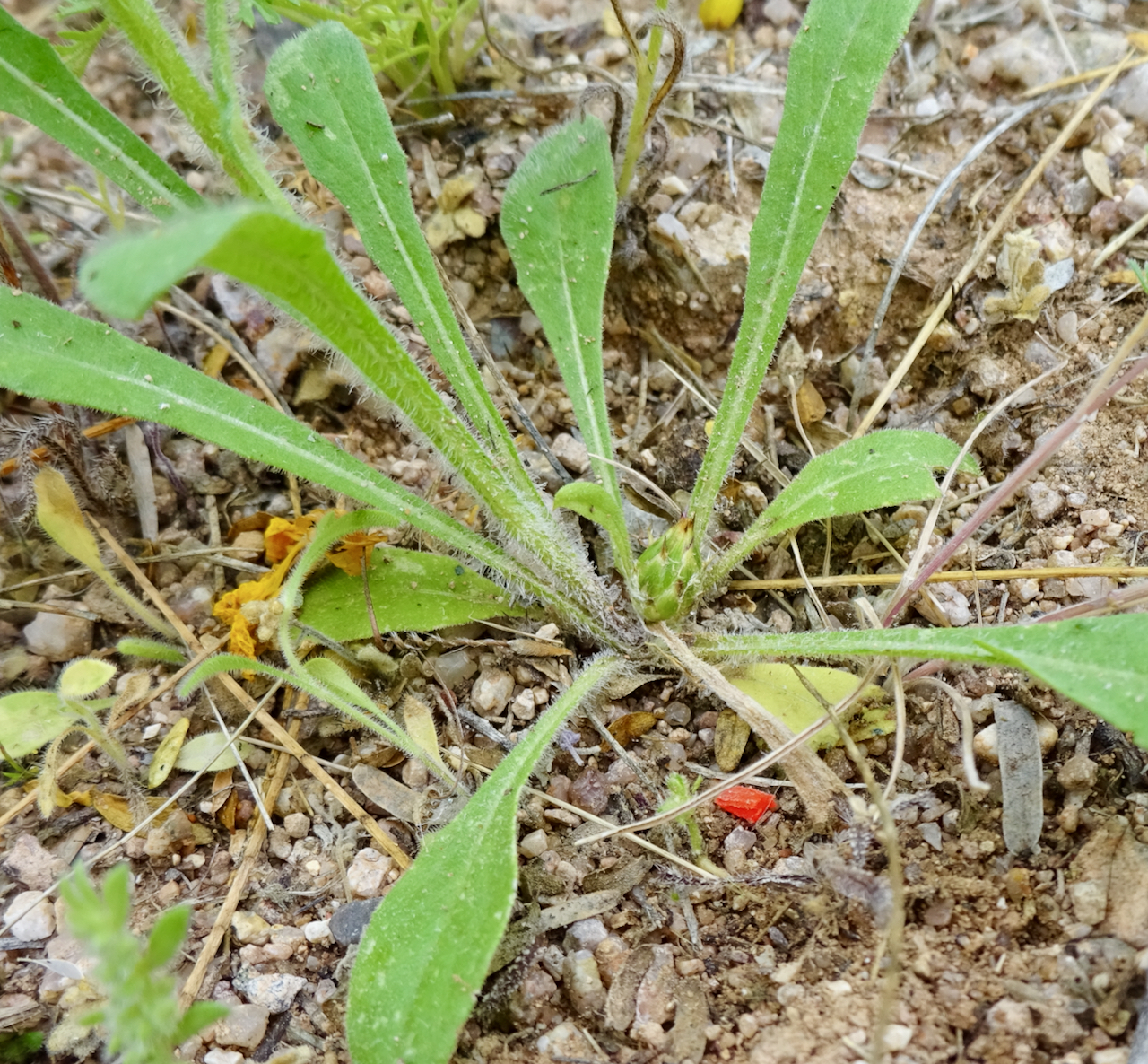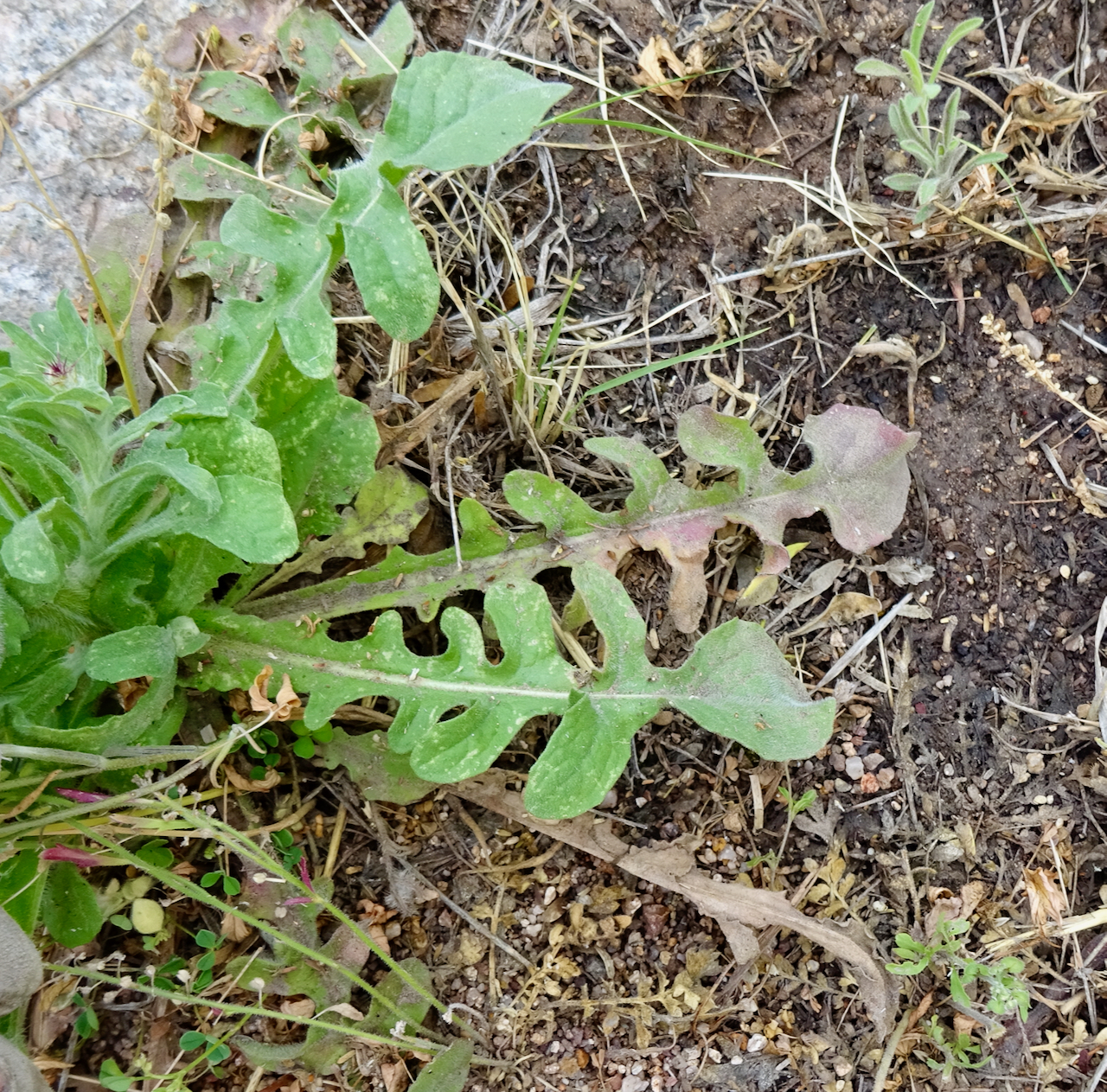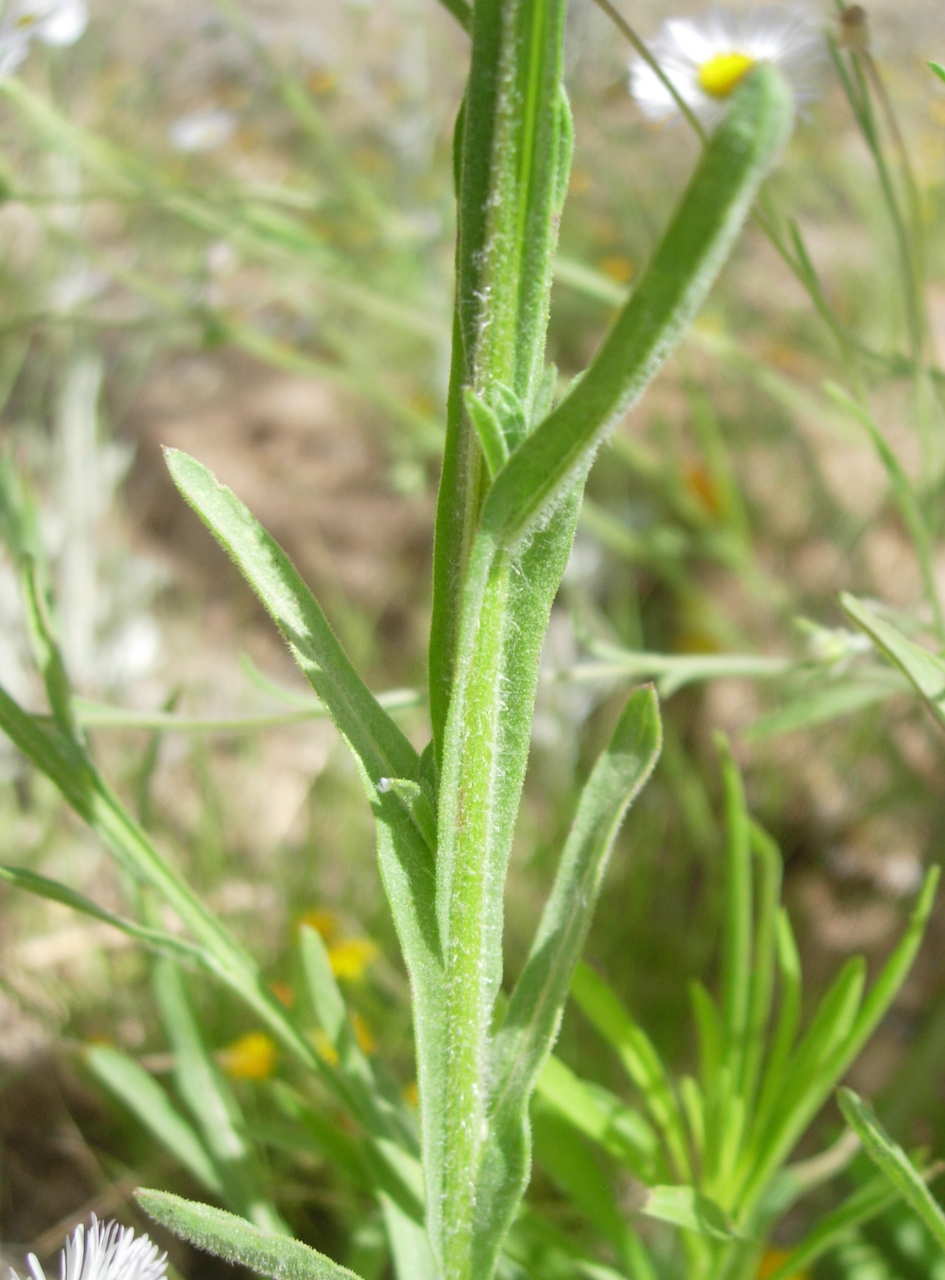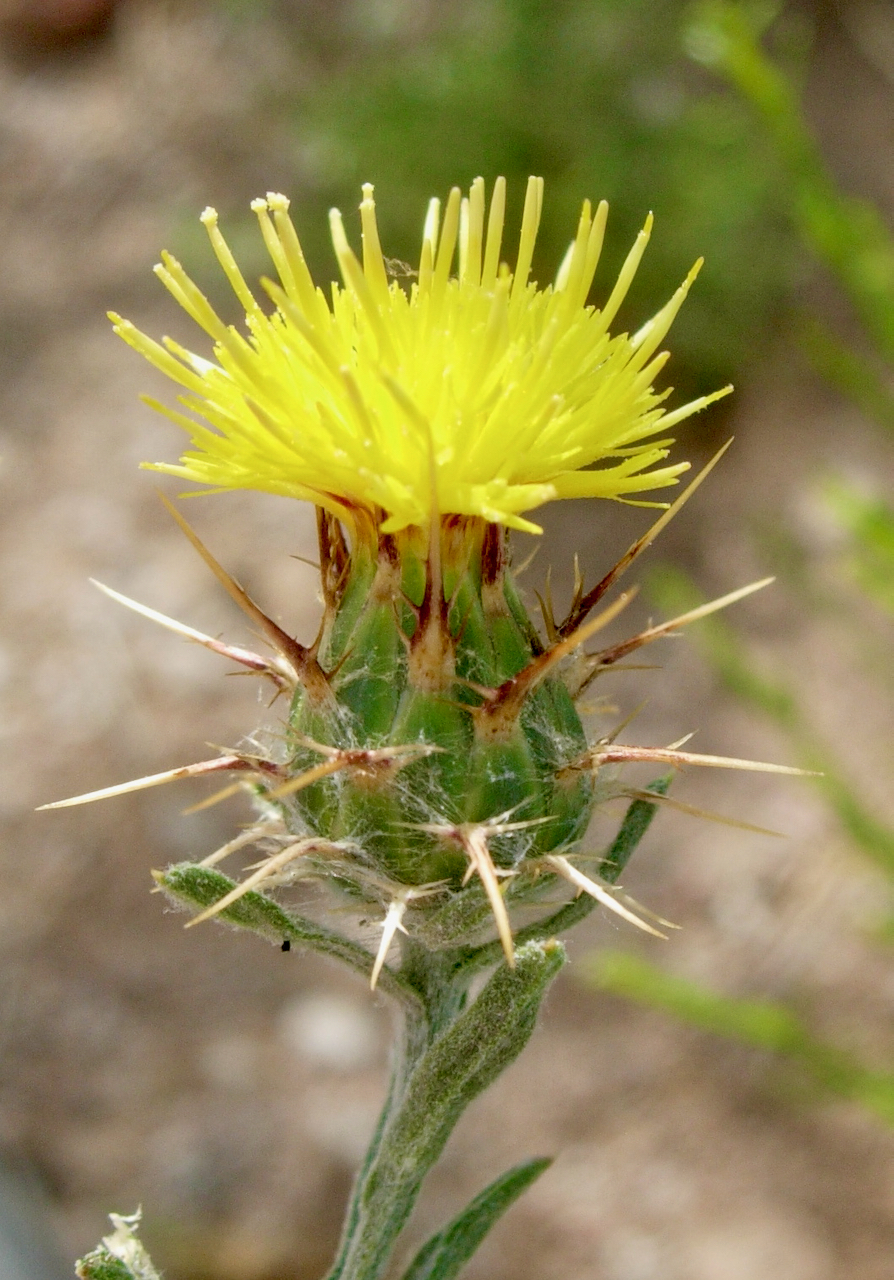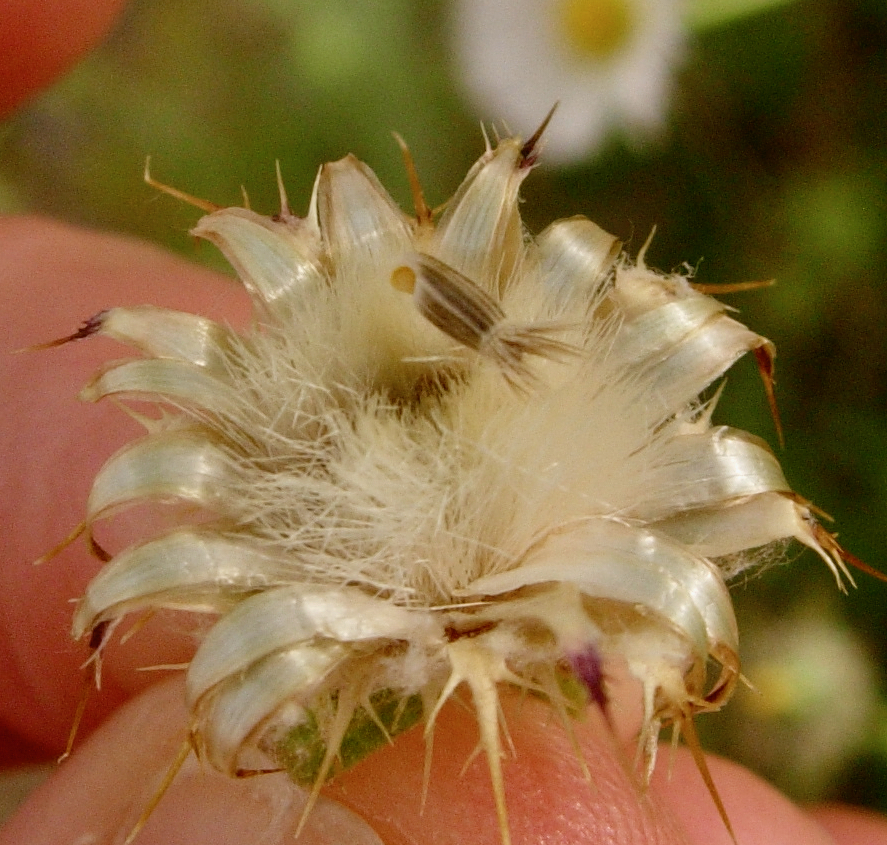Malta Starthistle
Centaurea melitensis
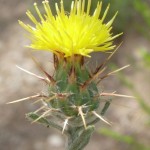
This is an INVASIVE PLANT!
Malta starthistle is an invasive annual from the Mediterranean region. It was introduced to California in the 1700s and has since spread to Arizona, New Mexico, Oregon, and Texas. It has the ability to form dense stands and outcompete natives for resources. Activities in areas with Malta starthistle are limited because the flower heads are covered with sharp spines.
Malta starthistle was added to the Arizona State Noxious Weed List in January, 2020.
Malta starthistle seeds germinate in winter and grow to form a rosette of leaves. As the weather warms, stems begin to grow, potentially reaching to 3 feet. Flower heads form on the ends of these stems in April. Flowering continues for several weeks.
Very small Malta starthistle with flower head starting to form at ground level
Malta starthistle can be hard to control because the first flower head can form when the plant is still quite small, only an inch tall and two inches wide; because each plant produces many seeds; and because the seeds are viable for several years, remaining in the soil until conditions are right for germination. Effective control requires persistent monitoring so any infestations are noticed before seeds have formed. To control, remove plant, including the roots, as the first stems begin to elongate. Make sure to discard plant in the trash - don't leave it on the ground.
Notes: Malta starthistle can be confused with yellow starthistle (Centaurea solstitialis). The leaves and stems of the two plants are similar. The flower heads are different: the spines on Malta starthistle are less than one-half inch long while the spines on the flower head of yellow starthistle are an inch in length.
More Information
Weekly Plant on Malta starthistle
Managing Malta starthistle from USDA
Identification and Management from Sonoran Desert Cooperative Weed Management Area
Map of distribution in US (light blue indicates exotic, pink indicates exotic and noxious; not updated for new 2020 AZ Noxious Weed List)
Technical botanical description from SEINet
